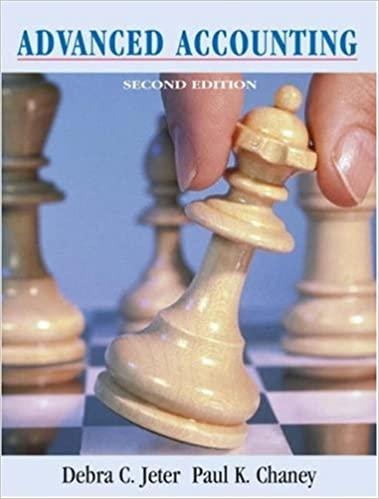Question
RunAway is a local company that custom-prints tech running shirts for organized racing events. The company has been in business for 2 years. Normal demand
RunAway is a local company that custom-prints tech running shirts for organized racing events. The company has been in business for 2 years. Normal demand for the tech running shirts is approximately 650 shirts per event. On average, there are two events per month. The company has the following direct costs pershirt: Direct material (tech shirts) $5.00 Direct labor (printing) $0.60 Direct labor (design) $2.70 Total direct costs $8.30. The company has historically estimated selling price based on the direct cost of providing the tech shirts. Prices reflected a 30% desired profit margin above direct costs. Recently, RunAway has experienced lower-than-normal profits and suspects that the prices it is charging are not covering all costs (direct and indirect) of providing the tech shirts. Indirect costs of the company include depreciation on the printing machines and utilities. The following data from the most recent year relate to these indirect costs: Depreciation, Tech Shirts, Utilities Jan $800 620 $1306 Feb $800 760 $1538 March $800 990 $1887 April $800 1250 $2000 May $800 1230 $1926 June $800 1390 $2148 July $800 1500 $2050 Aug $800 1600 $2250 Sept $800 1340 $2034 Oct $800 1250 $1845 Nov $800 1000 $1400 Dec $800 850 $1200 The management accountant estimates the following regression equation with utilities as the dependent variable and the number of tech shirts as the independent variable: y = $620 + $1.03X
1. If monthly sales are 1,300 tech shirts, what is the full cost per tech shirt?
box 1 (options: direct materials (tech shirts); direct labor (printing); Direct labor (design); fixed costs; total direct costs; variable utilities;) =
box 2 (options: direct materials (tech shirts); direct labor (printing); Direct labor (design); fixed costs; total direct costs; variable utilities;) =
box 3 (options: direct materials (tech shirts); direct labor (printing); Direct labor (design); fixed costs; total direct costs; variable utilities;) =
total full cost per tech shirt =
2. Why has RunAway been experiencinglower-than-normal profits? (Round any interim currency calculations to the nearest cent and enter the profit margin percentage to the nearest whole percent, X%.) Runaway has only been earning a(n) -- % profit margin on each tech shirt sold.Profits are lower than normal because RunAway has not been aware of how the -- (choice option: design, direct, indirect,material, printing) costs have been affecting overall profits. The decision to base prices on 30% markup of direct costs has been -- (effective or ineffective) in recovering all costs plus desired profits related to providing the tech shirts.
3. What price must RunAway charge to recover all costs and earn a 15% margin on all sales? (Round to the nearest cent.) RunAway must charge $--- to earn a 15% margin on all sales. D. What implications will a potential price increase have on RunAway and/or its customers? How might the owners address any negative reactions fromcustomers? If RunAway increases its price, they --- (choice option may lose, will gain, will not lose customers). The owners of RunAway --- ((a)need not worry about communicating the reason for the increase to its customers, b) will need to carefully approach current customers and explain that current price increase was necessary to cover all costs.)
Step by Step Solution
There are 3 Steps involved in it
Step: 1

Get Instant Access to Expert-Tailored Solutions
See step-by-step solutions with expert insights and AI powered tools for academic success
Step: 2

Step: 3

Ace Your Homework with AI
Get the answers you need in no time with our AI-driven, step-by-step assistance
Get Started


